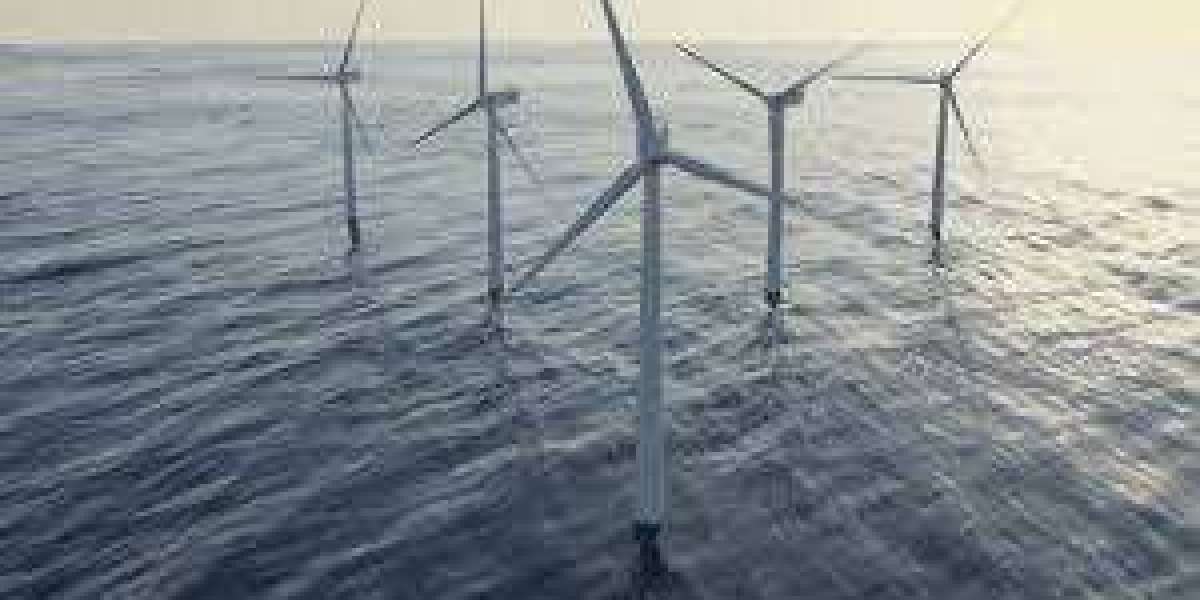As the global focus shifts toward cleaner and more sustainable energy solutions, offshore wind energy is emerging as a vital contributor to the world’s renewable energy mix. Positioned far from populated coastlines, offshore wind farms tap into stronger and more consistent winds, offering a significant advantage over their onshore counterparts. Recent innovations in technology, infrastructure, and financing are redefining what’s possible in this fast-evolving Offshore Wind Energy Market, making offshore wind energy more efficient, scalable, and economically viable than ever before.
Floating Wind Turbines: Unlocking New Horizons
One of the most groundbreaking advancements in offshore wind is the development of floating wind turbines. Unlike traditional fixed-bottom structures that are limited to shallow waters, floating turbines can be installed in deeper areas with higher wind potential. This opens up vast new regions for development, including deep-sea areas off the coasts of Japan, the U.S. West Coast, and parts of Europe.
Companies like Equinor and Principle Power are leading the charge, successfully deploying pilot projects and scaling up commercial efforts. Floating technology not only expands geographical reach but also reduces environmental impact by minimizing the need for heavy seabed foundations.
Next-Generation Turbines: Bigger, Smarter, and More Efficient
Turbine size and efficiency have seen tremendous leaps. The industry is moving towards turbines exceeding 15 MW capacity, such as GE’s Haliade-X and Siemens Gamesa’s SG 14-222 DD. These mega-turbines capture more wind energy with fewer units, reducing installation, maintenance, and operational costs.
Advanced control systems powered by AI and IoT technologies are also being integrated to optimize blade angles, predict maintenance needs, and enhance overall performance. These smart turbines significantly reduce downtime and increase power output, helping utilities meet growing demand without compromising reliability.
Digital Twins and Predictive Maintenance
Another notable innovation is the adoption of digital twin technology. A digital twin is a virtual replica of a physical turbine or wind farm that allows operators to simulate, monitor, and optimize real-time performance. This technology helps in anticipating potential failures, scheduling predictive maintenance, and improving the life expectancy of assets.
Digital twins reduce unplanned outages and maintenance costs, enabling more consistent energy production. They also contribute to data-driven decision-making for better asset management and system upgrades.
Subsea Power Transmission and Energy Storage
Transmitting power generated at sea back to the mainland efficiently is a major challenge. Recent advancements in high-voltage direct current (HVDC) technology have made it possible to transmit large amounts of electricity over long distances with minimal loss. Projects in the North Sea are already employing HVDC substations to connect multiple offshore farms into a single transmission grid.
In tandem, energy storage solutions—especially offshore battery systems—are being explored to store excess power and stabilize supply during low-wind periods. Companies are also investigating hydrogen production from offshore wind, converting electricity to storable energy that can be transported and used across various sectors.
Financing and Policy Innovations
Technological innovation alone is not enough—financial models and policy frameworks must also evolve. Power Purchase Agreements (PPAs), green bonds, and government-backed auctions are enabling private sector participation and lowering investment risks.
Countries like the UK, Netherlands, and Taiwan have adopted long-term policy roadmaps with ambitious offshore wind targets, giving developers and investors the confidence to commit to multi-billion-dollar projects. Such measures are accelerating market maturity and driving down the levelized cost of electricity (LCOE) from offshore wind.
A Glimpse into the Future
The offshore wind energy market is poised for exponential growth. With innovations spanning floating platforms, digitalization, smart turbines, and integrated energy systems, the sector is becoming more competitive and versatile. By 2040, offshore wind could supply up to 20% of global electricity demand, according to the International Energy Agency (IEA).
As the climate crisis intensifies and demand for clean energy escalates, the innovations transforming offshore wind today will be critical to building a sustainable and resilient energy future.








